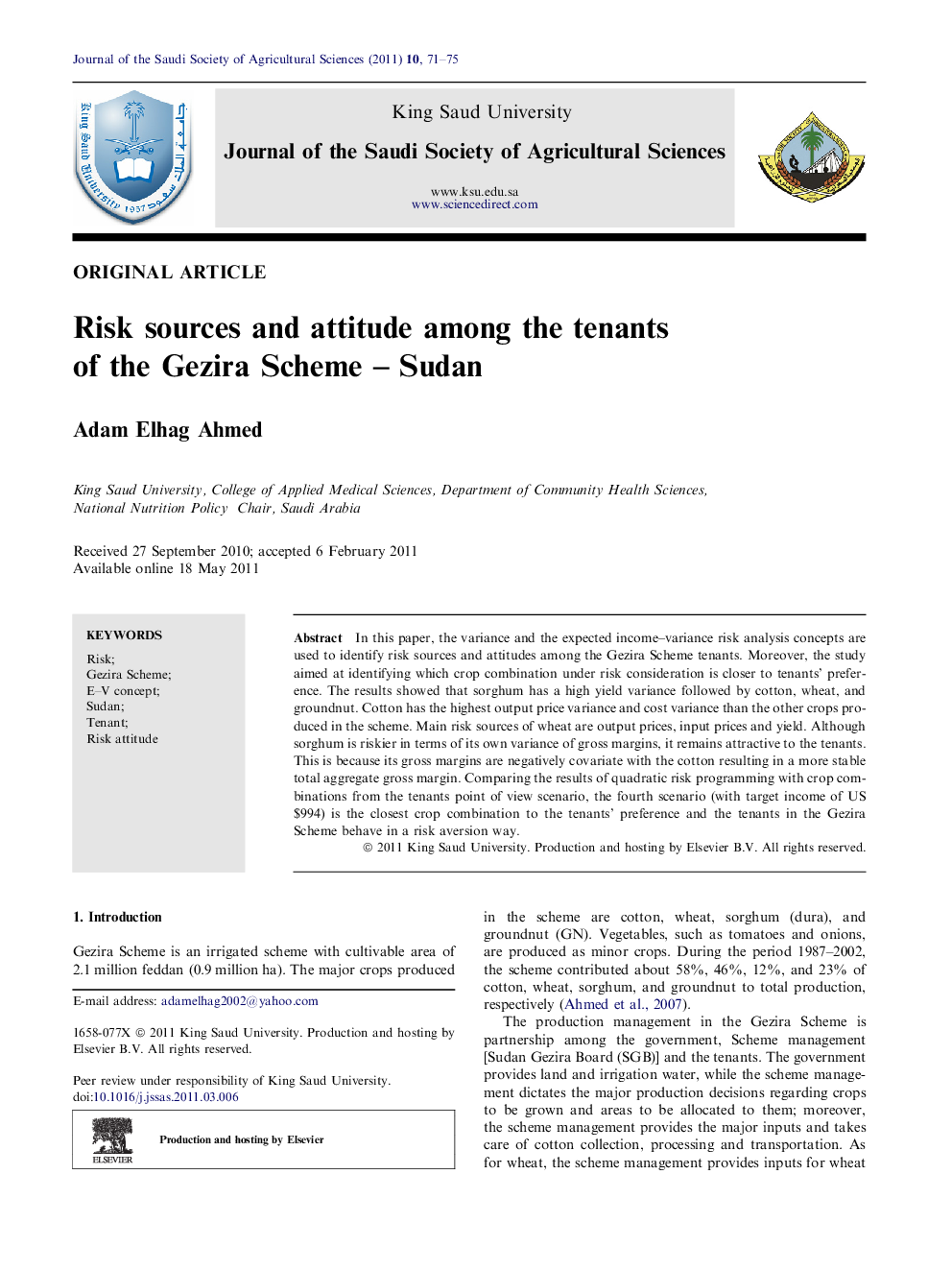| Article ID | Journal | Published Year | Pages | File Type |
|---|---|---|---|---|
| 4495622 | Journal of the Saudi Society of Agricultural Sciences | 2011 | 5 Pages |
In this paper, the variance and the expected income–variance risk analysis concepts are used to identify risk sources and attitudes among the Gezira Scheme tenants. Moreover, the study aimed at identifying which crop combination under risk consideration is closer to tenants’ preference. The results showed that sorghum has a high yield variance followed by cotton, wheat, and groundnut. Cotton has the highest output price variance and cost variance than the other crops produced in the scheme. Main risk sources of wheat are output prices, input prices and yield. Although sorghum is riskier in terms of its own variance of gross margins, it remains attractive to the tenants. This is because its gross margins are negatively covariate with the cotton resulting in a more stable total aggregate gross margin. Comparing the results of quadratic risk programming with crop combinations from the tenants point of view scenario, the fourth scenario (with target income of US $994) is the closest crop combination to the tenants’ preference and the tenants in the Gezira Scheme behave in a risk aversion way.
